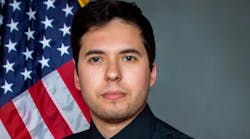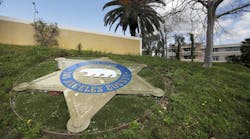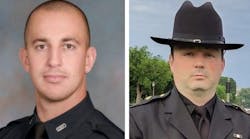June 10--Angel Lewis, 20, of the Hill District, said she sees police as "not helping me, but out to get me. ... Every police officer I have run into has been negative, every single one."
Cheryl Doubt, commander of the Pittsburgh Police Bureau's narcotics and vice unit, said young people today are "clueless ... I have found them to be very disrespectful. ... The language is atrocious."
They were inches away from each other when they made those comments, yet neither raised a voice or a hand in anger.
Frank but peaceful exchanges were the goal of a daylong event Friday in which 25 new police officers and 40 young people met in a Duquesne University auditorium and vented. The meeting was the rollout of the Disproportionate Minority Contact curriculum to the Pittsburgh police force and to area young people alike.
The goal is to give the same experience to hundreds of police and young people.
"We want to train the whole police force [in dealing with youth], not just the new recruits," said city police Chief Nate Harper, at a news conference before the meeting. "This will help to prevent incidents such as the Jordan Miles incident."
He was referring to an incident in Homewood in January 2010 between Mr. Miles, who is black, and three white Pittsburgh officers.
Police said they viewed then-18-year-old Mr. Miles' behavior as suspicious, thought he had a gun, identified themselves and chased him when he ran. Mr. Miles, then a student at the city's arts high school, said plainclothes police jumped out of an unmarked car, didn't identify themselves and beat him. The result: A swollen head for Mr. Miles and a lawsuit against the officers set to go to trial in U.S. District Court in July.
Disproportionate Minority Contact refers to the fact that non-white youth are overrepresented in the juvenile court system. The federal Office of Juvenile Justice and Delinquency Prevention has been trying to reduce that over-representation since 1988. The curriculum used Friday was developed by the Pennsylvania Commission on Crime and Delinquency and honed in Philadelphia by the Pennsylvania DMC Youth Law Enforcement Corp.
"We're going to take a ship that was going in one direction, and turn it," bellowed Paris Washington, chief inspector of the Philadelphia Sheriff's Department, who has worked on the curriculum since 2007 and moderated the discussion.
The new officers, one day post-graduation from the academy, sat in the middle of the auditorium. All were white.
The young people, the vast majority of whom had involvement with the juvenile justice system, surrounded them. All appeared to be black.
"Where are the black men up there? None," said Ms. Lewis, a student at Carlow University. A Pittsburgh policeman, she said, is "a white man, coming at me."
One youth told the gathering about a friend of his who spit on the sidewalk near a police officer. The officer "started choking him," he said. "I'm just like, 'Whoa, this is crazy.' "
Police veterans and rookies pleaded that they're not in law enforcement to bust heads, but to help people. If they are disproportionately in contact with a certain kind of youth, that's not always their fault.
"We get a ton of complaints here all the time: 'We've got these three kids hanging out on a porch with their pants down, wearing wife beaters, they're selling drugs,' " said police Sgt. Doug Epler, of the narcotics unit. Police often respond to find that the kids are just hanging out, he said, but their very arrival might create the impression that police are stereotyping.
When such encounters go badly, it can sour a young person's view on the entire profession.
"One cop does something to you, you see all of them the same," said Andre Barrow, 17, of Homewood. Why? "They all stick together."
Allegheny County police Officer Michael Spagnoletti said that police are always going to stick together on the street. But if an officer sees a colleague doing wrong, he won't back them up back at the station, in reports or, ultimately, in court, he said.
The youths didn't buy that. Asked by Inspector Washington whether they believed that police would tell on each other, just two youths raised their hands.
Later in the day the youths and police broke into debriefing sessions and role-played encounters.
The local DMC effort is a collaboration of the city police, the county police, public defender, juvenile court, juvenile probation office and district attorney.
Chief Harper said he wants all of his officers to get the one-day DMC training over the next year. Officers need to know "what's going on in the youth's mind when they encounter, or begin to converse with, our youth," he said.
"A police encounter may not be criminal," said the chief. "It may just be a mere encounter."
Rich Lord: [email protected] or 412-263-1542.
Copyright 2012 - Pittsburgh Post-Gazette


